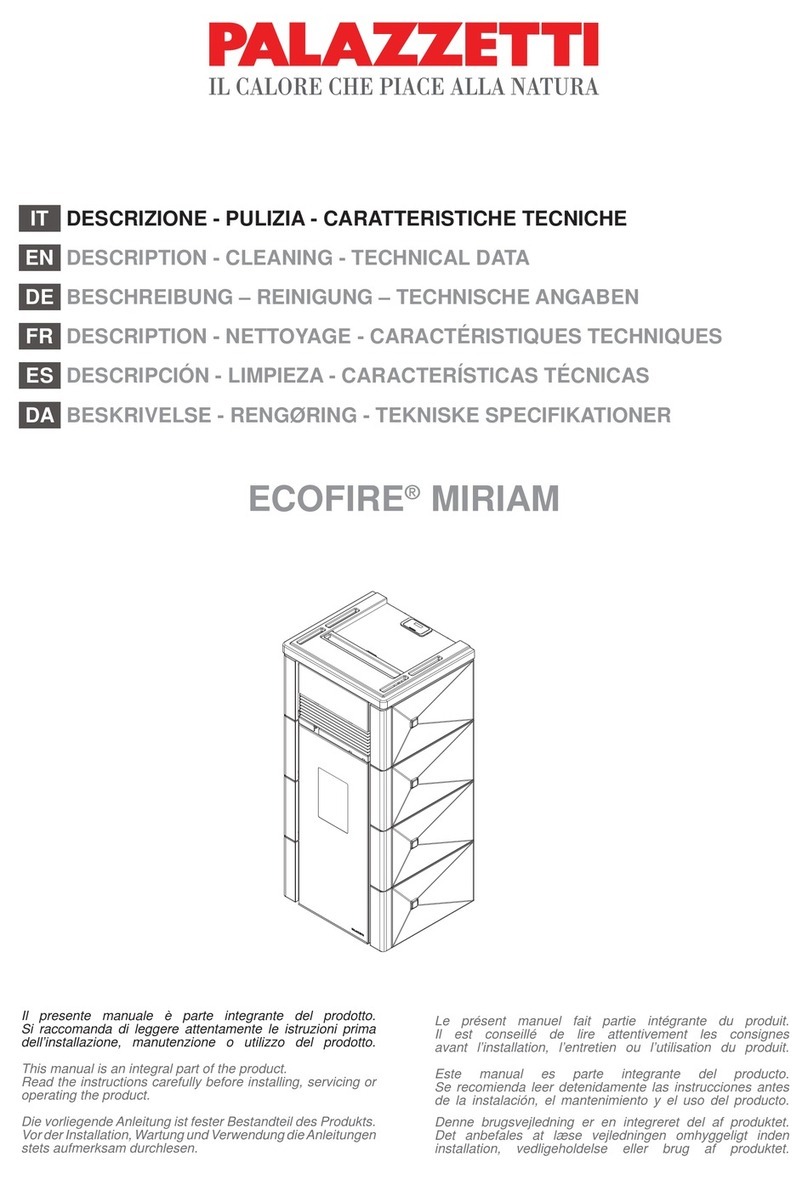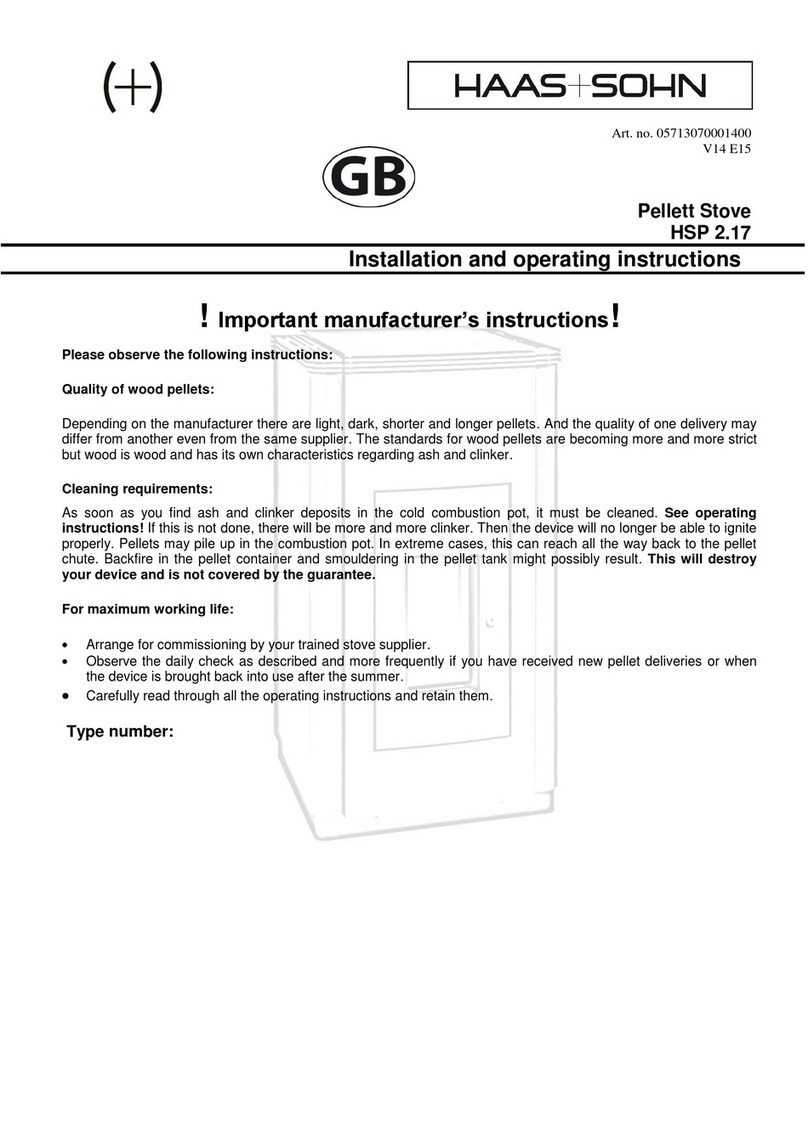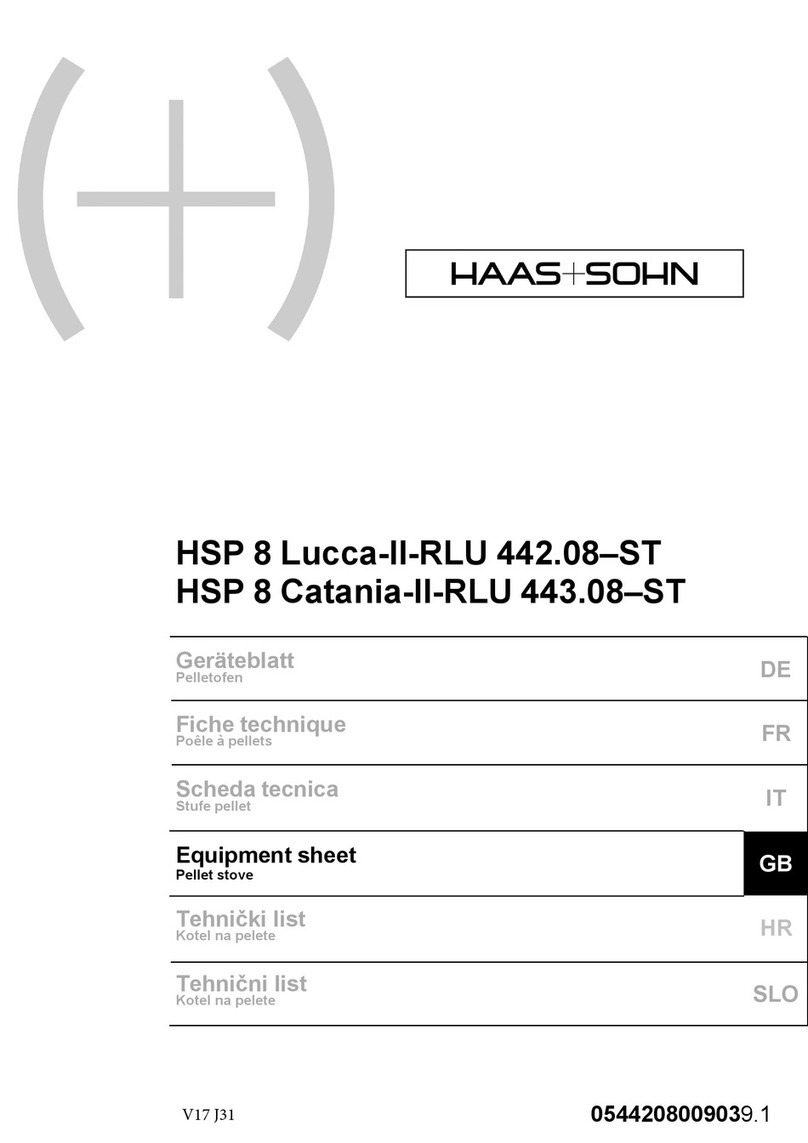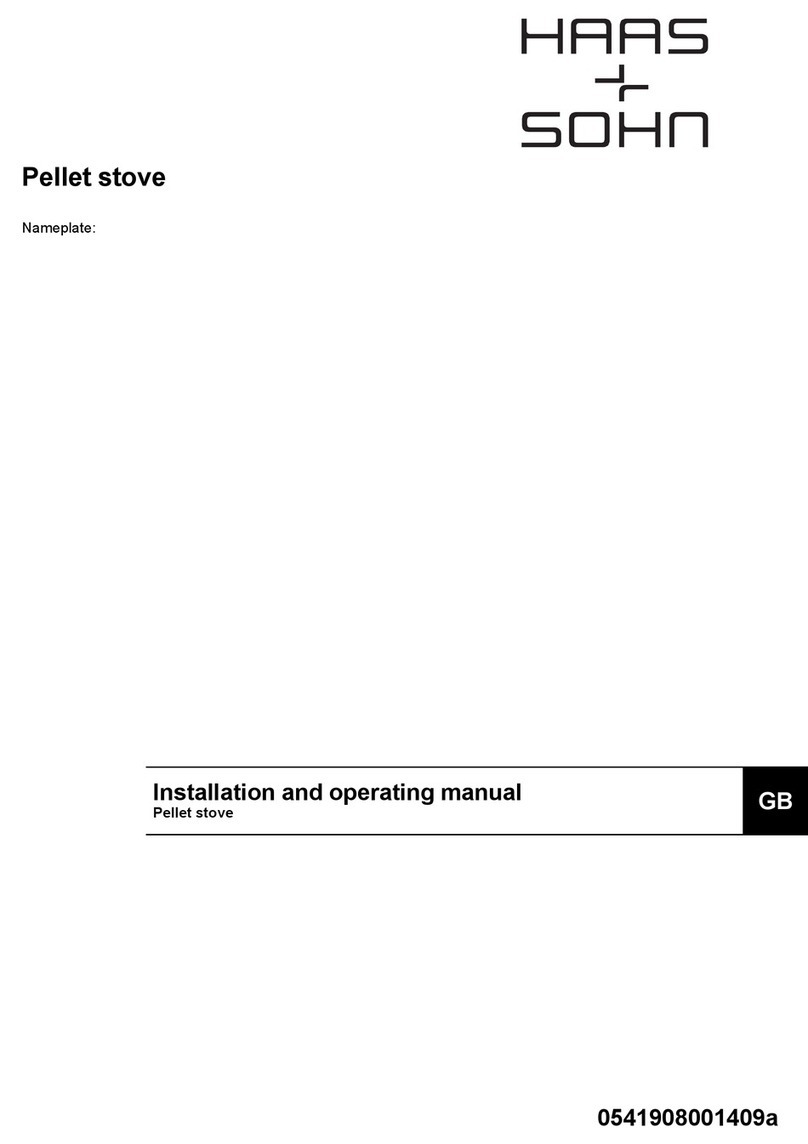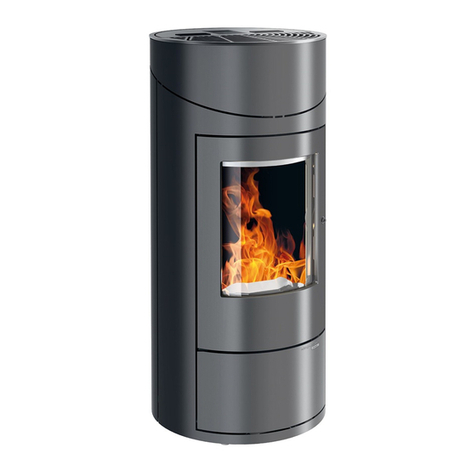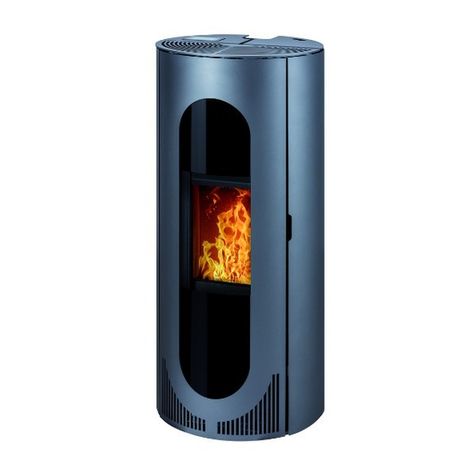Congratulations! You are the owner of a HAAS + SOHN
pellet stove, a quality product. Please read through
these instructions carefully. They will tell you all about
the functions and operation of this stove, which will
increase the utility of this device and extend its working
life. What is more, with the correct heating you can save
fuel and protect the environment.
We can only give a guarantee on our products if you
observe the following instructions in these installation
and operating instructions. In addition, the stove must be
correctly installed so as to prevent possible accidents.
Look after these instructions well, then you will be able
to familiarise yourself with the correct operation of your
stove at the start of every heating period.
Note:
The installation and operating instructions given in this
manual may differ entirely or in part from public authority
instructions. In that event, the public authority
instructions always apply! The drawings in these
instructions are not to scale and serve only as
illustrations.
1. Description
Pellet stoves are particularly suitable for the constant
heating of residential and work rooms. The
HAAS+SOHN pellet stove is set up to operate in fully
automatic mode, with a choice of 2 operating modes
(“Heating” and “Auto”with a weekly programme).
Depending on the room temperature and on the model,
a volume of fuel for a maximum of 30 hours of constant
operation may be stored in the built-in storage container.
The fuel is fed automatically from the pellet tank to the
grate via a screw conveyor, with the quantity of fuel
automatically being adjusted to the relevant heat output.
The internal control unit regulates the ignition phase, the
heating phase and the cooling down phase, thereby
guaranteeing safe operation of the pellet stove. The
operator console, which consists of a display and four
function keys, is built into the pellet tank cover.
The heating of the air in the room and the creation of
comfortable living conditions is mainly achieved by
convection. This allows you to quickly warm up even
cold rooms that have been unheated for a lengthy
period. The cooler air of the room enters the stove at the
bottom of the cladding, is heated and flows out again at
the top in the area of the slats. The proportion of radiant
heat is given off by radiation in the area of the viewing
window of the combustion chamber door and from the
stove’s metal surfaces.
2. General instructions, safety instructions
Before commissioning the pellet stove read the
entire installation and operating instructions through
thoroughly.
Only permitted handling gear with sufficient
loadbearing capacity may be used for moving your
device.
Your heating device is not suitable for use as a
ladder or mounting frame.
For the installation of your stove, the fire protection
authority’s regulations and the local building
regulations in force at the installation site are to be
observed and you should also discuss this with the
district heating inspector. He will also check that the
connection of the device to the fireplace is carried
out correctly.
All the checks required by law have been performed
on your stove. The mandatory indices regarding
technical combustion efficiency and flue gas
emissions are observed.
The pellet stove may not be connected to a multiple-
use chimney provided. The supply pressure must
be at least 6 Pa and should be 15 Pa as a
maximum.
The combustion chamber door may be opened only
for cleaning and maintenance during operating
status “Off”. Otherwise it is to be kept closed –even
when the stove is not operating in order to avoid
affecting other heating appliances and the
associated risks.
An adequate supply of fresh air must be guaranteed
to the room where the stove is installed. However,
the pellet stove offers you the option of a direct
connection to the outside air via a suitable air duct.
So operation independent of the air in the room is
possible. (See Section 3 “Installation of the pellet
stove and connection to the chimney”).
Attention! The pellet stove may not be set
up to be operated jointly with the home’s air
conditioning and ventilation units.
The chimney (fireplace or flue) must be made of
stainless steel or ceramics (glazed internally) and
suitable for wet operation so that it cannot rot.
The pellet stove cannot be connected to the mains
electricity until it has been correctly connected to the
fireplace.
